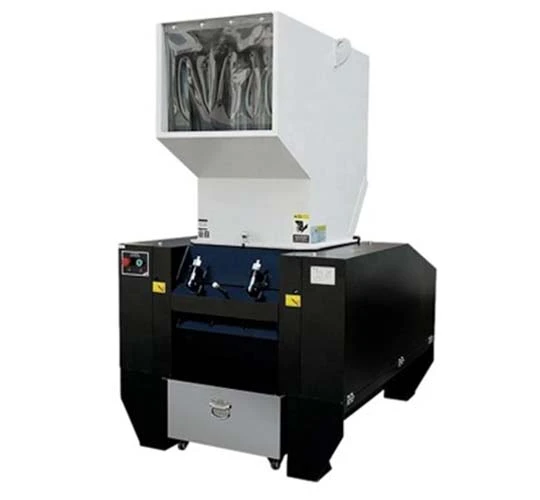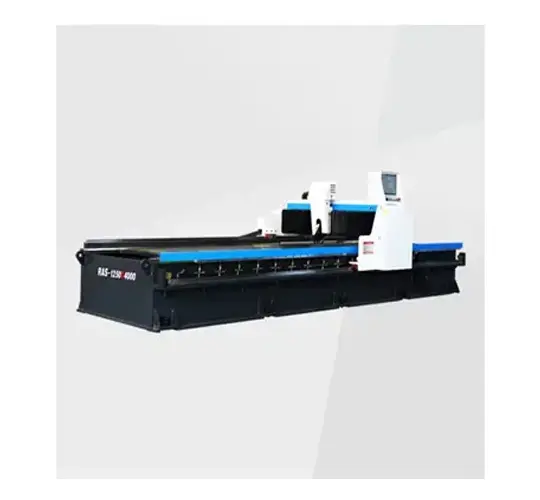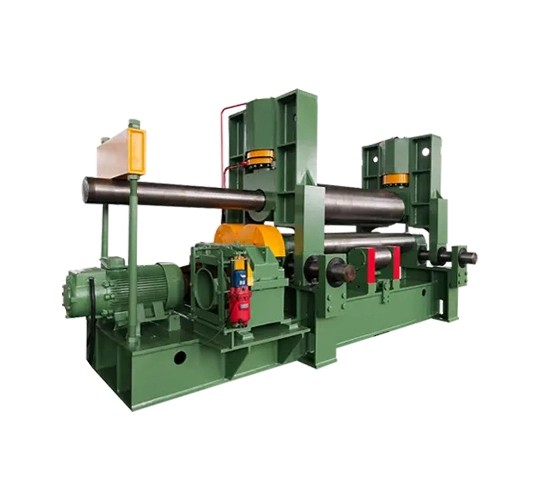Plate rolling machines are indispensable in metal fabrication, enabling the transformation of flat metal sheets into curved shapes such as cylinders, cones, and arcs. The bending roll process imparts specific curvatures to plates, producing O-shaped, U-shaped, or multi-stage R-shaped components. This versatility makes plate rolling machines critical for manufacturing a wide array of products across various industries. This guide explores the diverse applications of plate rolling machines, their working capacities, and the different types and features available, providing a comprehensive overview of their role in modern manufacturing.
Applications of Plate Rolling Machines
Diverse Industrial Uses
The plate rolling process is a deformation technique that shapes metal plates into curved forms, making it essential for producing cylindrical and conical components used in numerous sectors. By adjusting the relative distance between the upper and lower rollers, operators can achieve any curvature radius greater than that of the upper roller, accommodating workpieces ranging from a few meters wide to extremely narrow dimensions. Plate rolling machines are employed in industries such as structural engineering for creating curved beams, wind tower manufacturing for forming turbine structures, and offshore platforms for producing robust cylindrical components. They are also critical in aerospace for shaping aircraft parts, shipbuilding for hull and structural elements, and the energy sector for components like boilers and pressure vessels. Additional applications include earth-moving machines, truck containers, heat exchangers, and marine engineering, where specialized rolling machines form arc plates and bulkheads. The ability to process plates, pipes, and profiles with varying thicknesses enhances the machines' utility across these diverse fields.
Working Capacity Factors
The working capacity of a plate rolling machine is defined by its ability to roll sheets of larger thickness and width into smaller diameters under a specified yield limit in a cold state. This capacity is determined by four key parameters: the maximum rolling thickness, maximum roll width, material properties of the plate, and the minimum drum diameter achievable at maximum size. These factors collectively establish the machine's maximum performance, and their interplay governs the operational limits of the bending rolls. Manufacturers provide detailed manuals to guide users in optimizing these parameters for efficient and safe operation, ensuring the machine meets specific production requirements.
Types and Features of Plate Rolling Machines
Classification by Roll Configuration
Plate rolling machines are classified based on the configuration and number of work rolls, primarily divided into two-roll, three-roll, and four-roll models. Two-roll bending machines, typically manual and hand-operated, are outdated and unable to meet modern production standards, leading to their gradual phase-out. Three-roll and four-roll machines dominate the market due to their advanced capabilities, offering superior precision and efficiency. The following sections detail the features and advantages of three-roll and four-roll machines, along with specialized models designed for niche applications.
Three-Roll Plate Rolling Machines
Three-roll plate rolling machines are widely used due to their simple structure, high cost-performance, and versatility. They are available in mechanical and hydraulic variants, as well as symmetrical and asymmetrical configurations, making them adaptable to various production needs. The compact design of three-roll machines facilitates easy operation and maintenance, appealing to manufacturers across industries.
Upper Roller Universal Plate Rolling Machine
This type of three-roll machine features a vertically moving upper roller powered by a hydraulic cylinder to apply pressure for bending, while the lower rollers adjust horizontally via a motor to control the distance between rollers. This symmetrical arrangement enables pre-bending of plate ends, reducing straight-edge length. The bottom rollers, driven by an electromotor, provide torque for rolling, and a hydraulic cylinder powers the overturning device for unloading finished workpieces. The drum-shaped upper roller, combined with adjustable support rolls, ensures precise rolling for both thick and thin plates. Advanced digital control enhances bending accuracy, and an auxiliary cone device simplifies conical rolling. The machine's whole-base design requires a simple foundation, making it convenient for workplace integration.
Symmetry Plate Rolling Machine
The symmetrical three-roll machine features an upper roller that moves vertically between two lower rollers, which serve as the main driving rollers. Torque is provided through a reducer's output gear meshing with the lower roller gears. Mechanical versions rely on screw nuts and worm gears for transmission, while hydraulic models use hydraulic oil acting on pistons. Profile molds can be installed on one end of the rollers in mechanical models to process profiles, enhancing versatility. This design ensures consistent torque delivery and reliable performance for standard rolling tasks.
Asymmetry Plate Rolling Machine
In asymmetrical three-roll machines, both upper and lower rollers act as main driving rolls, with the lower roller lifting vertically for plate clamping. The upper roller rotates via gear meshing with the lower roller, while a side roll performs linear inclined lifting to facilitate pre-bending and rolling. This configuration improves work efficiency by enabling one-time forming and is ideal for producing small-diameter cylinders, offering precision and speed for specialized applications.
Hydraulic Arc Adjust Plate Rolling Machine
This advanced three-roll machine features three main drive rollers of equal diameter, with a fixed upper roller and two lower rollers that move in an arc around a central pivot, driven by hydraulic transmission. The lower rollers can move together or independently, with their displacement displayed on a touch screen for high precision. Incorporating Italian technology, this machine offers a movable operation table, excellent feeding and rolling capabilities, and a cone rolling device. The arc movement of the lower rollers increases forming force, ensuring consistent clamping without plate sliding, making it suitable for rolling small-diameter cylinders with high accuracy.
Lever Down Adjust Plate Rolling Machine
Designed for both cold and hot rolling, this three-roll machine features active rollers driven by hydraulic pressure. The upper roller lifts, and the lower rollers move horizontally, with synchronization controlled by a computer for high precision. Its compact size and high accuracy make it particularly effective for specialized rolling tasks, offering reliability and efficiency in demanding environments.
Four-Roll Plate Rolling Machines
Four-roll hydraulic plate rolling machines excel in pre-bending and rolling cylindrical workpieces for industries like pressure vessel manufacturing, machinery, and construction. They also offer circle and leveling functions, making them highly versatile. The upper roller, driven by a hydraulic motor, uses friction to rotate the lower and side rolls, providing torque for rolling. The lower roll moves vertically, and the side roll arcs upward for pre-bending, both powered by hydraulic systems. CNC numerical control and digital displacement displays ensure high precision and good roundness. Full hydraulic drive enhances efficiency and reduces energy consumption compared to traditional models, achieving productivity 50–80% higher than three-roll machines. Additional features include permanent lubrication, precise material alignment, and a cone device for easy conical rolling. The machine can roll workpieces with diameters as small as 1.1 times the upper roller's diameter, with shorter straight edges during pre-bending. Its design supports integration with handling, feeding, and supporting devices, enhancing operational flexibility.
Special-Purpose Rolling Machines
Trailer Rolling Machine
Tailored for specific applications, trailer rolling machines come in symmetrical up-roller adjust and upper-roll universal series. In the symmetrical model, the upper work roll moves vertically, while the two lower rolls remain fixed. In the universal series, the upper roll moves both vertically and horizontally, maintaining fixed lower roll positions. A “with upper beam” variant features a press roll on the upper beam to increase rigidity, allowing smaller upper roller diameters for tight-radius bends, ideal for trailer components with precise rounded corners.
Marine Rolling Machine
Designed for shipbuilding, marine rolling machines roll arc plates for ship shells and press groove bulkheads. Available in symmetric and asymmetric three-roll configurations, these machines feature a rigid beam above the upper roll and multiple idler supports between rollers to enhance rigidity. All three rollers are fully driven, ensuring robust performance for heavy-duty marine applications. Custom designs cater to specific shipbuilding requirements, optimizing efficiency and precision.
The Broad Utility of Plate Rolling Machines
Plate rolling machines are vital for shaping metal across industries, from structural engineering to shipbuilding and energy production. Their ability to handle diverse materials, thicknesses, and shapes, combined with advanced three-roll, four-roll, and specialized configurations, ensures versatility and precision. By understanding their applications and features, manufacturers can select the ideal machine to meet production demands, delivering high-quality curved components with efficiency and reliability.
 English
English 日本語
日本語 한국어
한국어 français
français Deutsch
Deutsch Español
Español русский
русский Türkçe
Türkçe português
português العربية
العربية Polska
Polska हिंदी
हिंदी Indonesia
Indonesia



